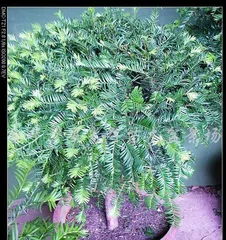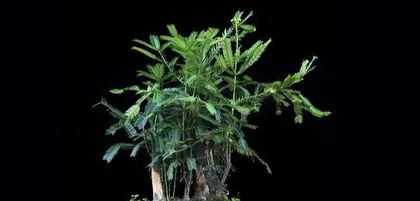Yew bonsai is a common indoor bonsai, often used as a decorative item in homes or offices. However, to maintain its beautiful appearance and healthy growth, timely pruning is essential. How should we properly prune a yew bonsai? Next, this article will provide you with a detailed introduction to the pruning methods for yew bonsai.

I: Understanding the Growth Cycle of Yew
Before starting to prune, we need to understand the growth cycle of the yew. Yew is a slow-growing tree species that takes a long time to form a complete tree structure during its growth process. When pruning, be careful not to over-prune, as it may affect the normal growth of the yew.
II: Choosing the Right Time to Prune
Choosing the right time for pruning is also very important. Generally, spring and autumn are the best times for pruning. This is because the growth rate of yew is slower in spring and autumn, which can avoid damage to the plant.

III: Removing Dead Branches and Diseased Leaves
When pruning a yew bonsai, the first step is to remove dead branches and diseased leaves completely. This can effectively prevent the spread of pathogens and affect the health of the plant.
IV: Trimming the Length of Branches
When pruning a yew bonsai, it is necessary to control the length of the branches. Generally, the length of each branch pruning should not exceed one-third of the original length. This can ensure that the overall shape of the yew bonsai is not destroyed.
V: Controlling the Pruning Time
When pruning, each branch and twig needs to be pruned one by one. However, to avoid excessive damage to the leaves and branches of the yew, the pruning time needs to be controlled. Generally, each pruning session should not exceed 30 minutes.

VI: Avoiding Excessive Fertilizer
When pruning a yew bonsai, it is necessary to avoid using too much fertilizer. Excessive fertilizer will have a negative impact on the growth of yew and may even lead to its death.
VII: Avoiding Overwatering
When pruning a yew bonsai, it is also necessary to avoid overwatering. If overwatered, it will cause the roots of the yew to rot, which in turn will affect the healthy growth of the plant.
VIII: Removing Weeds and Pollen
When pruning a yew bonsai, impurities such as weeds and pollen need to be removed. These impurities will affect the growth state of the yew bonsai and may spread pathogens.
IX: Paying Attention to the Hygiene of Pruning Tools
When pruning, pay attention to the hygiene of pruning tools. Disinfect the tools before each use to avoid the spread of pathogens.
X: Proper Placement of the Yew Bonsai
When pruning a yew bonsai, it is also necessary to place it properly. Generally, yew bonsai is suitable for being placed in a place with sufficient sunlight and good ventilation.
XI: Controlling the Pruning Intensity
When pruning, it is necessary to control the pruning intensity. If pruned excessively, it will lead to slow growth of the plant, affecting the overall aesthetic effect.
XII: Changing the Soil in a Timely Manner
Changing the soil in a timely manner is also very important. The soil needs to be changed once every spring and autumn to ensure the healthy growth of the yew bonsai.
XIII: Paying Attention to Plant Protection
When pruning a yew bonsai, pay attention to the protection of the plant. During the pruning process, do not touch the plant directly with your hands to avoid causing damage to the plant.
XIV: Emphasizing Light and Water
Light and water are also essential for the growth of yew bonsai. When pruning a yew bonsai, pay attention to the control of light and water to ensure the healthy growth of the plant.
XV:
When pruning a yew bonsai, many issues need to be paid attention to. Understanding the growth cycle of yew, choosing the right time to prune, removing dead branches and diseased leaves, trimming the length of branches, controlling pruning time, avoiding excessive fertilizer, avoiding overwatering, removing weeds and pollen, paying attention to the hygiene of pruning tools, proper placement of the yew bonsai, controlling pruning intensity, changing the soil in a timely manner, paying attention to plant protection, and emphasizing light and water all require careful attention. Only in this way can you create a charming yew bonsai.